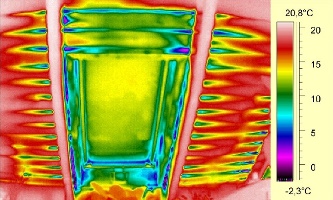ESPC Step D - Measurement and Verification
Annual Measurement and Verification is a critical step meant to demonstrate that the projected cumulative energy cost savings guarantee has been met.
Measurement and Verification will be conducted by Honeywell International and will take place on an ongoing basis following completion of each work phase. The City will then cross-verify Honeywell International’s findings and compare actual energy cost savings against the projected savings as guaranteed in the ESPC.
If changes to the facilities took place that affect the guarantee (e.g. expansion of a building, other energy efficiency measures installed, or significant hours of operation changed, etc.), then the energy scost avings guarantee will be adjusted up or down, accordingly.
 Honeywell International may use any one of three chosen project performance verification methods:
Honeywell International may use any one of three chosen project performance verification methods:
A. Engineering calculations (possibly including spot measurements) with stipulated values; or
B. Engineering calculations with metering and monitoring both before and after retrofit; or
C. Utility meter billing analysis (using techniques from simple comparison to multivariable regression analysis).
These methods (four in total, method D not being used for Worcester's ESPC) will conform to the most recent protocols and standards established by the Federal Energy Management Program of the U.S. Department of Energy.
The actual cost savings should be equal to or exceed the original estimates. However, for every year that there may be shortfalls from projected to actual savings, the difference will be paid to the City by Honeywell International.
Honeywell International will also have the option of installing additional energy savings measures, with the City’s approval, to mitigate any shortfall in subsequent years.

